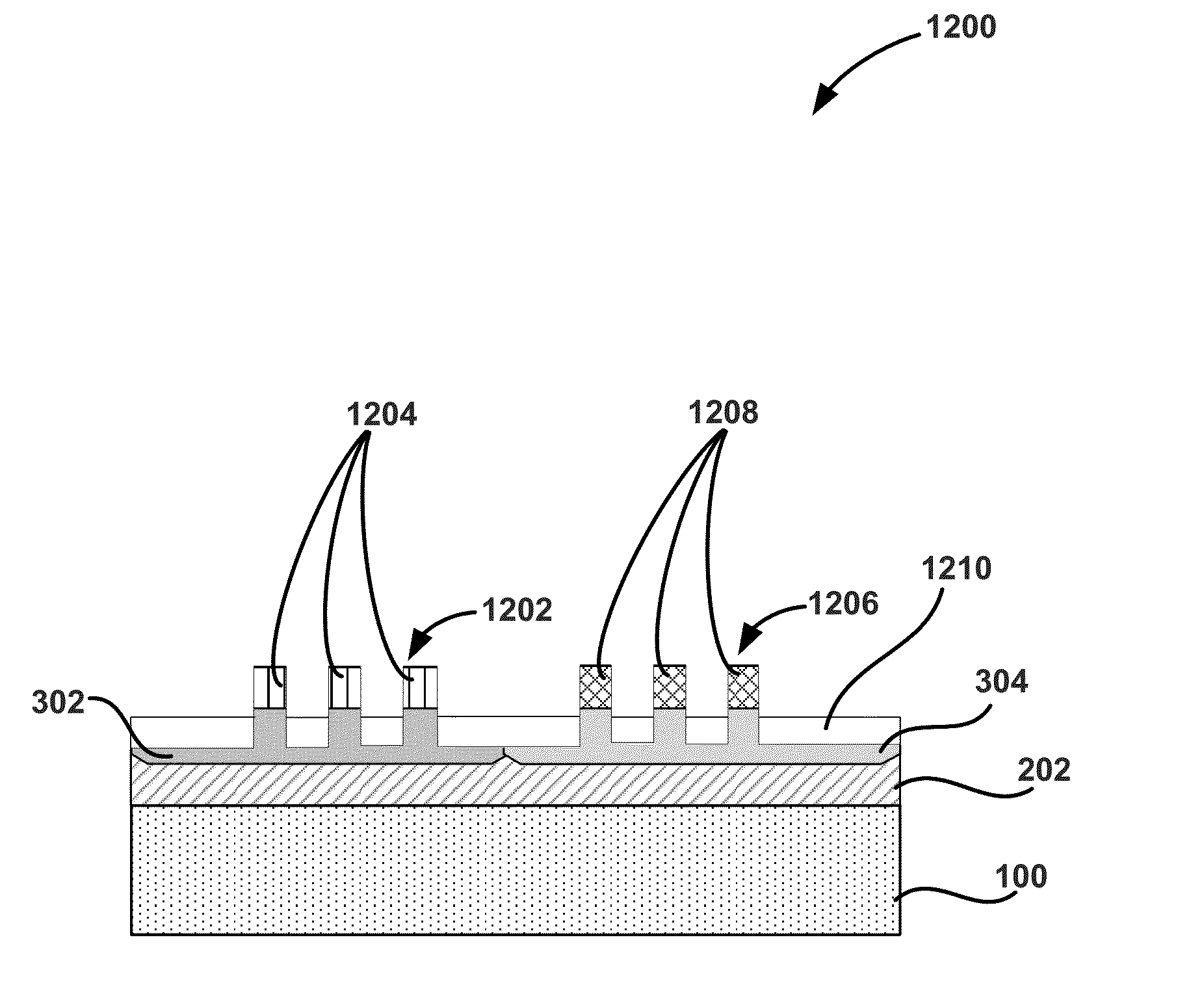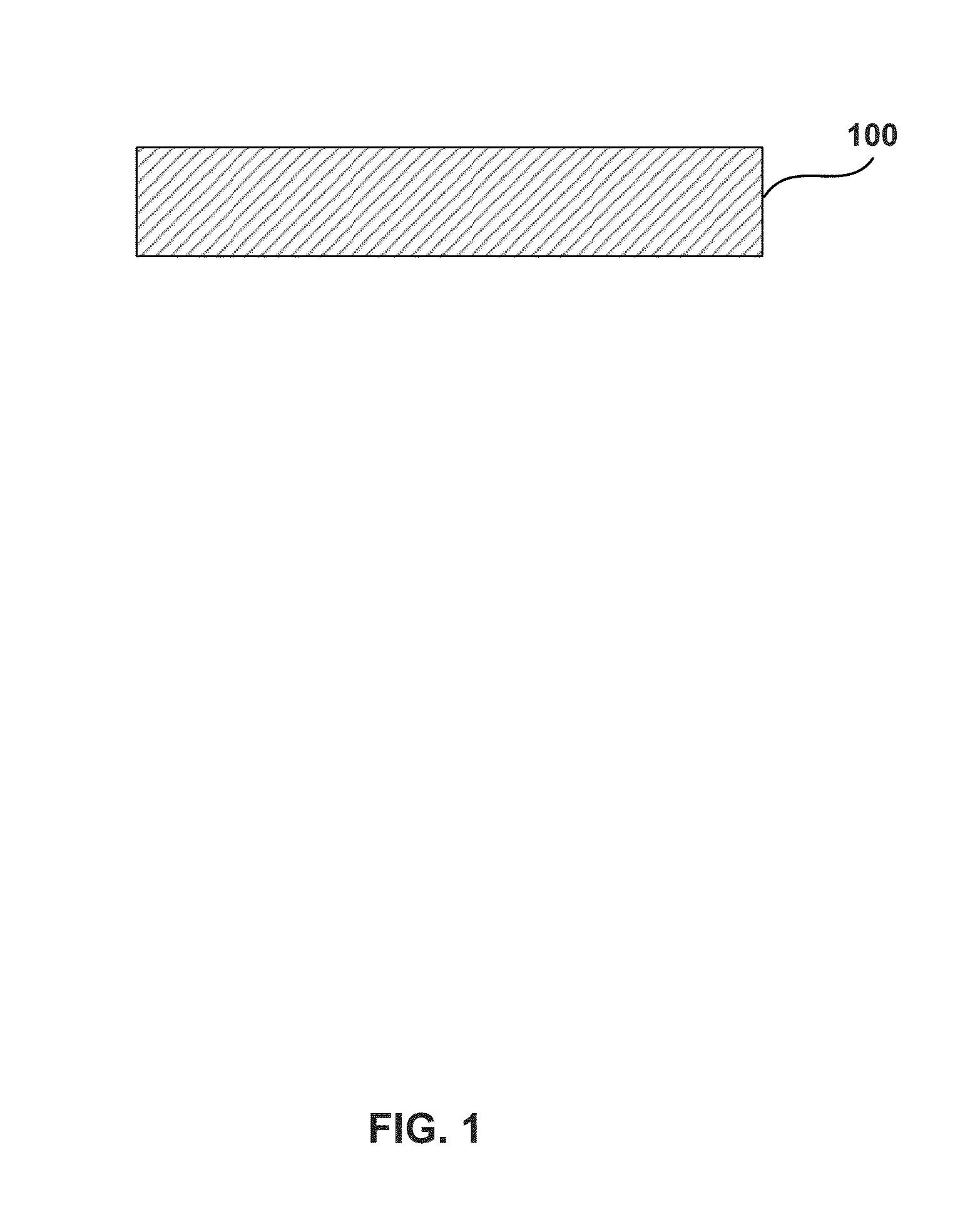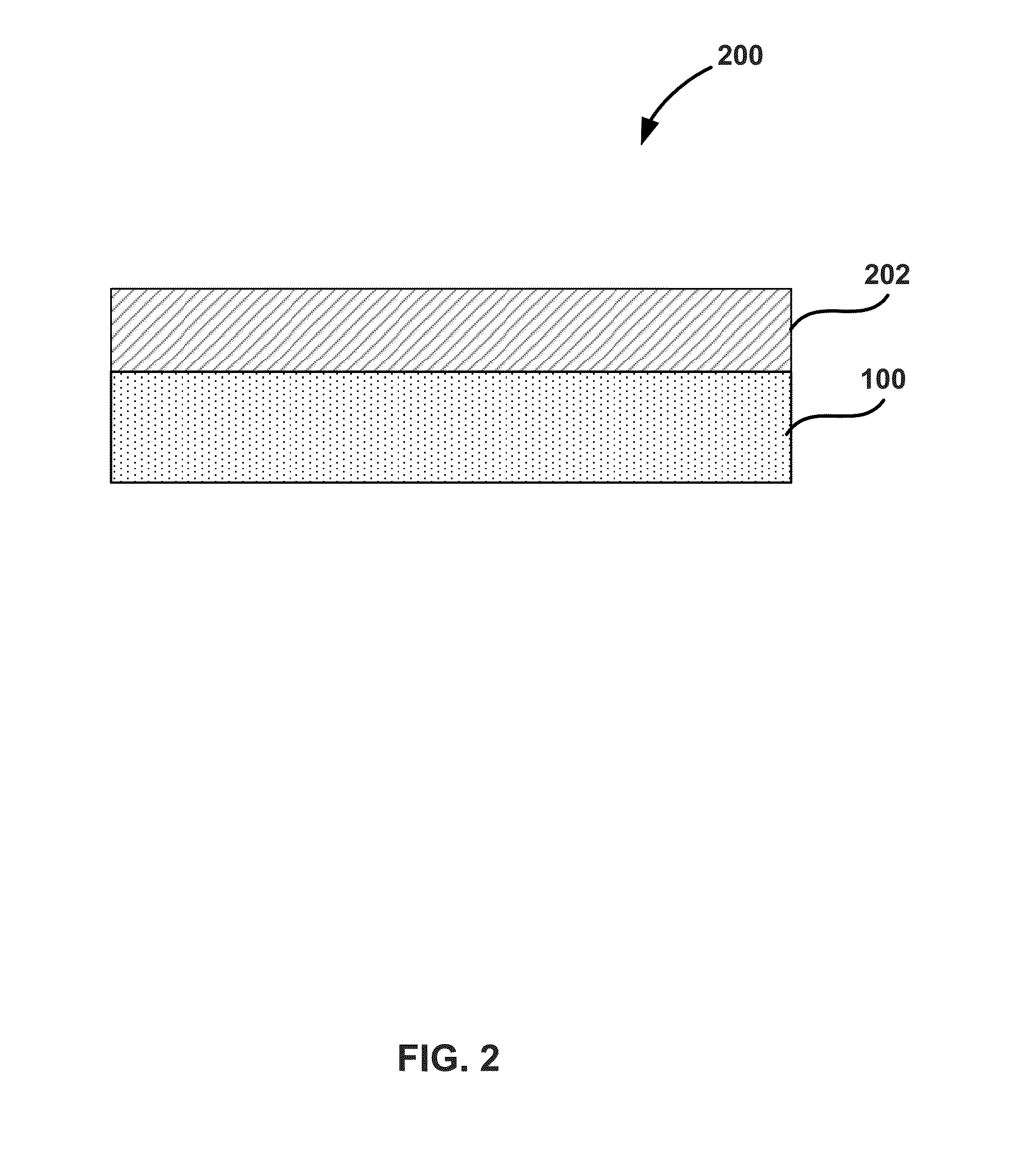Semiconductor structure and device and methods of forming same using selective epitaxial process
a technology of epitaxial process and semiconductor, applied in the direction of semiconductor devices, electrical equipment, transistors, etc., can solve the problems of increasing the idle power requirements of the device, increasing the switching speed, and reducing the operating power consumption
- Summary
- Abstract
- Description
- Claims
- Application Information
AI Technical Summary
Benefits of technology
Problems solved by technology
Method used
Image
Examples
Embodiment Construction
[0027]The description of exemplary embodiments of methods, structures, and devices provided below is merely exemplary and is intended for purposes of illustration only; the following description is not intended to limit the scope of the disclosure or the claims. Moreover, recitation of multiple embodiments having stated features is not intended to exclude other embodiments having additional features or other embodiments incorporating different combinations of the stated features.
[0028]The present disclosure relates, generally, to semiconductor devices and structures and to methods of forming the devices as structures. As set forth in more detail below, the structure may be used to form devices including multiple gates, such as FinFET devices, having germanium in the channel region.
[0029]FIG. 12 illustrates a structure 1200 in accordance with exemplary embodiments of the disclosure and FIGS. 1-11 illustrate structures formed during the fabrication of structure 1200. Structure 1200 is...
PUM
 Login to View More
Login to View More Abstract
Description
Claims
Application Information
 Login to View More
Login to View More - R&D
- Intellectual Property
- Life Sciences
- Materials
- Tech Scout
- Unparalleled Data Quality
- Higher Quality Content
- 60% Fewer Hallucinations
Browse by: Latest US Patents, China's latest patents, Technical Efficacy Thesaurus, Application Domain, Technology Topic, Popular Technical Reports.
© 2025 PatSnap. All rights reserved.Legal|Privacy policy|Modern Slavery Act Transparency Statement|Sitemap|About US| Contact US: help@patsnap.com



